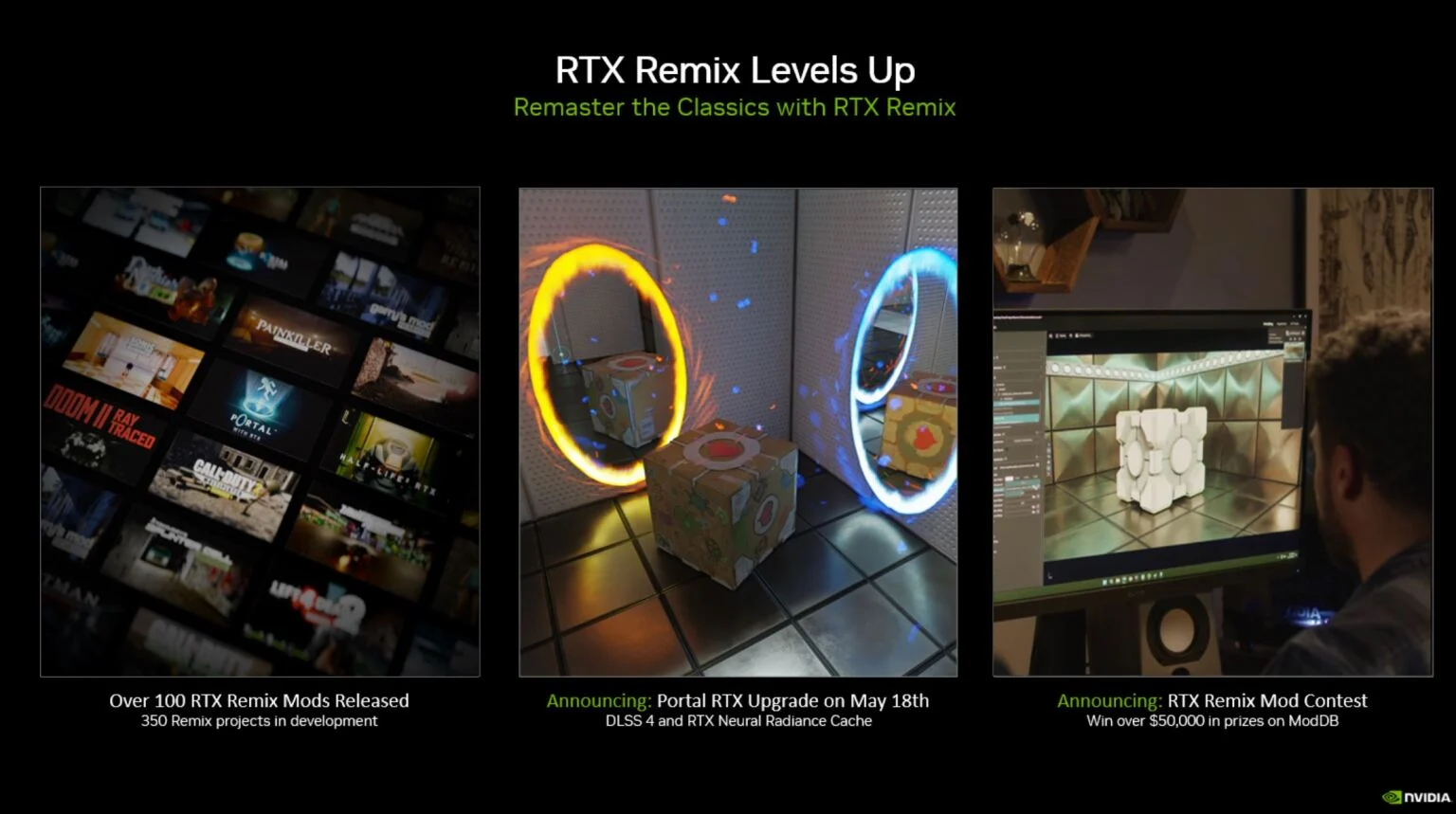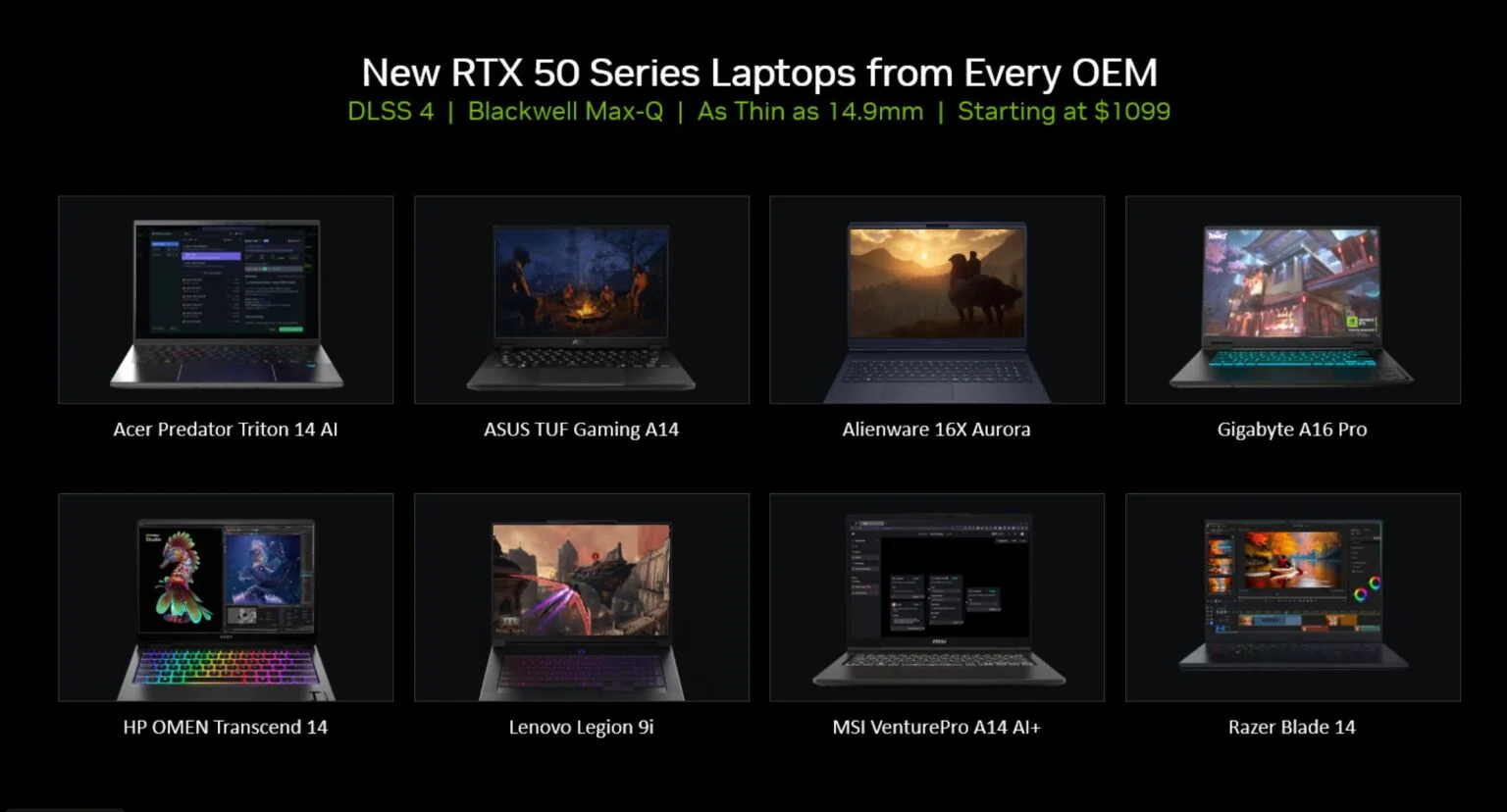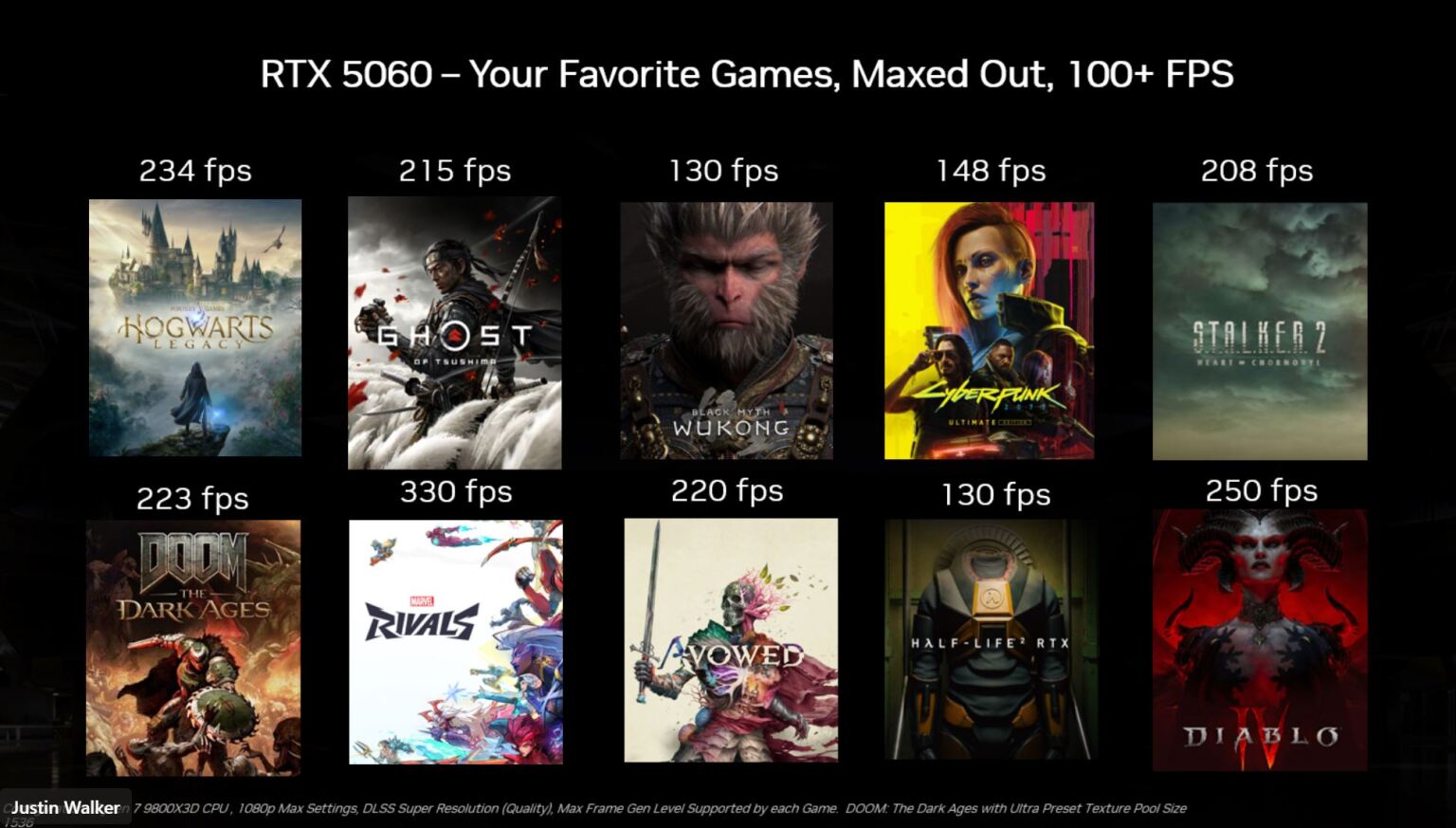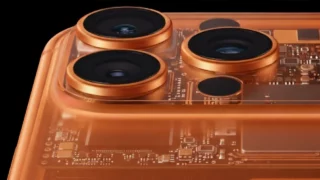NVIDIA’s long-awaited GeForce RTX 5060 graphics cards and mobile GPUs have finally hit the shelves. The RTX 5060 is available for desktops starting at $299, while laptops using the RTX 5060 are available for a starting price of $1,099.
GeForce RTX 5060 is available for sale starting at $299
The new GPUs promise performance of over 100 FPS in more than 100 games, especially those that support DLSS 4 technology. However, due to a performance driver update released on the day of release, it has not yet been possible to test the desktop or laptop versions of the RTX 5060. Therefore, it is not possible to verify NVIDIA’s claimed performance figures at this time.

The RTX 5060 is the most affordable way to try out NVIDIA’s latest graphics technology. However, experts recommend waiting for independent reviews before making a purchase decision. However, like the other RTX 50-series cards released this year, the RTX 5060 desktop GPUs may sell out soon after release.
The RTX 5060, which is made for the desktop, shares the same features seen in other RTX 50-series cards. In addition to the new graphics architecture, the RTX 40-series comes with a higher core count than its predecessors. The RTX 5060 has 3,840 CUDA cores, compared to the RTX 4060, which has 3,072 CUDA cores. This upgrade will help the RTX 5060 overtake the RTX 4060 in terms of performance.
NVIDIA also chose to offer the RTX 5060 with GDDR7 memory. The RTX 5060 has a 128-bit memory interface like the older RTX 4060, and this feature was seen to limit performance, especially at resolutions above HD.

While GDDR7 memory doesn’t completely solve this problem, it does reduce the impact of the narrow 128-bit interface on gaming performance by being faster and providing more bandwidth than GDDR6 memory. As part of the RTX 50 series, the RTX 5060 supports the latest gaming features, including DLSS 4, which uses NVIDIA’s multi-frame generation technology.
This tool uses the GPU’s Tensor coprocessor cores to analyze frames generated by the GPU’s CUDA and shader cores and generates three new frames for each, increasing frame rates. NVIDIA also shared some performance figures for various games to show how the RTX 5060 will perform. However, all of these test results were obtained using DLSS 4.
With DLSS 4, the RTX 5060 can run all of NVIDIA’s listed games at over 100 frames per second (fps). However, using DLSS 4 can cause image quality issues and lag.
Experts say that if you can’t play the game otherwise, you can use DLSS to get higher frame rates, but if you can generally get a reasonable frame rate, it’s better to leave it off.
NVIDIA used a similar testing methodology when it announced that the RTX 5070 would perform similarly to the RTX 4090. However, these claims were a bit far-fetched because the RTX 4090 is much faster than the RTX 5070. The test results shared for the RTX 5060 should be evaluated with similar skepticism.

Some information was also shared about the RTX 5060 as a laptop GPU. NVIDIA stated that all computer manufacturers on the market will sell laptops equipped with the RTX 5060. Although the exact details of these systems are not yet known, it was announced that the RTX 5060 will be included in gaming laptops as thin as 14.9 mm. The starting price of the gaming laptops is expected to be at least $1099.
The mobile version of the RTX 5060 is running at a target graphics power (TGP) of between 45 watts (W) and 100W. The 45W models will likely also be labeled Max-Q or Blackwell Max-Q, as NVIDIA has been using the term Max-Q to refer to GPUs running in low-power mode for some time now.
NVIDIA also highlighted its software achievements with the RTX 5060 announcement. It also mentioned more games that support DLSS 4, as well as updates to its RTX Remix technology, which uses advanced techniques to improve the image quality of older PC games.
To illustrate this, NVIDIA announced an update to its Portal RTX mode, which was released two years ago. This update improves the graphics of the original Portal game using advanced image optimization techniques like DLSS and ray tracing. The latest Portal RTX update will now use DLSS 4 and NVIDIA’s RTX Neural Radiance Cache technology.
So, overall, if you want to buy an NVIDIA GeForce RTX 5060 graphics card for your desktop computer or get a laptop that comes with this new GPU, you need to start looking now.













